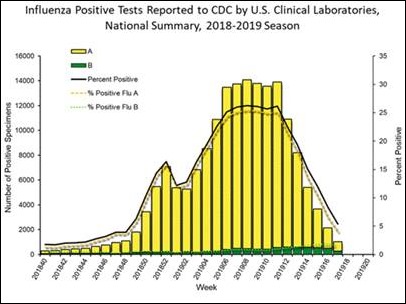HIStalk Interviews Ashish Shah, CEO, Prepared Health
Ashish Shah is co-founder and CEO of Prepared Health of Chicago, IL.

Tell me about yourself and the company.
I was previously the chief technology officer for Medicity, where I worked for about eight years leading up to the acquisition by Aetna. I stayed for three and a half years post-acquisition. Prepared Health is a Chicago-based company that is a little over four years old. Our platform connects hospitals and health plans to post-discharge providers such as post-acute care facilities, home care, and social determinants of health partners.
Your new customer Jefferson Health said in the announcement that they want to offer “healthcare with no address.” How are hospitals motivated financially to coordinate post-discharge care?
What’s been happening in healthcare over the last 20 years is a physical re-engineering. For a long time, care was organized around the institution, the community, the beacon, the hospital. Everyone could point to it. But there’s been an overwhelming amount of merger and acquisition activity as pressure increases over cost and improving the access in the community. Sometimes that’s care in the home, sometimes it’s rehab facilities or ambulatory sites. We’re starting to see significant re-engineering of physical assets and communities.
Jefferson is thinking about care not only in those care settings, but also virtually and on demand. You never know when you’ll have a moment that requires a healthcare encounter, so make it easier. President and CEO Dr. Stephen Klasko is a pretty special guy. He reminds me a little bit of Mark Bertolini at Aetna when he talked about quality equaling convenience. Trying to make life easier in healthcare, which is a mess, unfortunately. That’s why I started this company.
Who pays for your system? Do hospitals convince their local post-acute care providers to use it to manage their shared patients?
Like all early companies, we’re not immune to having to figure it out. But in our model today, everyone pays a modest subscription for the platform. We don’t have a limitation on the number of users, the number of patients who are managed, or the number of coordination moments that are managed through our network. That was by design. Part of the challenge is simplifying the entire go-to-market model.
Hospitals pay, but it is our ultimate responsibility to bring post-acute care sites — home health, other home-based providers, and community-based providers – online. That’s part of the value. It’s a difficult job, not only for hospitals, but for health plans, too.
Were hospitals already in regular contact with those post-acute care providers, or is it a new new relationship for the two groups to be at least talking, if not actually working together?
It’s starting to change. A lot of those relationships have been at the social work level. If you had a transitional care nurse or a licensed social worker who was managing that transition out of the hospital, they were the ones who knew the facilities and the home-based providers. It was a personal relationship. That’s how decisions were made on who goes where and for how long.
Cost and quality are bigger topics. You’re starting to see health systems start to invest in new roles, directors or VPs of preferred provider networks or post-acute care in addition to population health roles. There’s more of an effort to try to understand your partners outside of the hospital. The reality is that you can’t acquire enough providers. There will always be a capacity issue. These groups are trying to get a handle on who the very best partners are to invite into their preferred network.
The product screenshots on your site look a lot like Facebook. How important is the user interface when users work for post-acute care organizations that may not use much technology and who may perform all their work on a mobile device?
This is the principal design challenge. It’s extremely important.
If you don’t mind, I’m going to back up for a minute to talk about why I started the company. My father suddenly passed away six months after Medicity was acquired by Aetna. He was way too young. It was unfortunate. We felt unprepared. I was an executive inside of a healthcare business, but over the ensuing months after his passing, we spent time with people who were around him from a caring perspective. He was visited by home health aides. He spent time in senior centers. The toughest thing to understand was that many of these people knew what was happening with him, but there was no mechanism to share that information.
That was the most humbling moment for me. At Medicity, we had connected thousands of hospitals to many ambulatory care sites, yet nothing we we were working on was going to change our family situation with my dad. As I dug into the problem, there are 100,000-plus sites of post-acute home and community-based care. That’s being conservative. The challenge is a design challenge. How do you quickly organize a large ecosystem that the majority of the market says has no money? Why would you focus on that? Yet we know it is super critical.
When I left Aetna and Medicity, we looked at models like Facebook and LinkedIn. Although we had made nice progress, Facebook and LinkedIn had organized billions of users. Although our business model is not the same as theirs, there’s something to be learned from their design approach.
Sometimes technology just makes a process more efficient or transparent, but your platform does something that can’t be accomplished otherwise. You can’t get everyone from all these provider organizations and family members together at the same time in a conference room or conference call.
We are in a crisis right now as a country. Ten thousand people are turning 65 years old every day. People talk about the silver tsunami. It’s going to tax the healthcare ecosystem in a significant way, but 47 million people in the US are unpaid family caregivers. These are people who care and who are willing to do whatever it takes to take care of their loved one, but they have no coaching, no training, no access, no connectivity.
As much as I love many of the great healthcare IT companies that are out there, no one is really focused on this part of the space. What health systems and health plans are starting to talk to us about is that personal caregivers, family caregivers, somebody in the community, or post-acute care providers make up an important group of teammates that they need to get connected and coached.
What kind of interaction do family members typically have with the platform and the provider care team?
Our first version was full transparency, just the way I wanted it when I started the company. It’s not uncommon to see home health staff and all the different workers connected to the family members around an individual. Or maybe a skilled nursing facility is also involved. Everyone is in together.
The types of things that people are doing are escalations and managing interventions. If somebody has a fall in the home or if there’s a sudden change in mood or weight gains, those are prompted by the professional care team to the family members and communication around those moments is being managed. These are difficult moments for families and there’s a lot of emotion in these conversations. What we’re most proud of is that through our implementation, we’ve seen these two groups turn into one team versus two teams that sometimes let emotions get the best of them.
As we think about scaling that experience, our provider organizations have coached us to think about how to keep the convenience and access in place, but to think about this as two modes of communication — a back office communication channel where things are communicated in shorthand and then a front office communication channel where you have buttoned up or polished communication with the patient and family. The concern is always that somebody will say something that makes the organization look bad. We’re working through that with some of our earlier customers.
It would seem beneficial to allow caregivers who work for different organizations and who may rotate assignments to have a closed channel that allows them to take a conversation offline.
We’ve paired group-based communication with individual communication. We’re trying to attack any mode of communication. That could be an assessment, an electronic check-in on how you’re progressing, a referral, or a transition. We incorporate group and secure texting and chat into the product. Interestingly, we see high utilization of all of these across the board.
The magic is communicating with somebody outside your organization. That’s the biggest challenge. I spent 10 years working on data interoperability in healthcare and God bless everyone who is trying to push all that stuff forward, but I think we have skipped over the fact that a number of these types of things will never happen through an EMR. People don’t talk through EMRs. They don’t manage interventions in real time through EMRs.
What kinds of things does your virtual care coordinator recommend?
DINA is our digital nursing assistant. She was an accidental invention. It started with how we could create this rapidly growing ecosystem or community for communication. In our first implementation, we met Amie Martinelli from Bayada Home Health Care. I’ll never forget her. She did an amazing job of coordinating care for complex CHF patients. When we looked back at the implementation, we thought, how will we ever scale Amie? Is this what everyone in healthcare is doing? As we studied more, it is what everyone is doing.
Every great outcome is an exception. Someone has to put forth a heroic effort to make sure all the right things happen. That’s hard in a market where there’s 40-50% turnover. We thought that a combination of advanced analytics, AI, and all the other buzzwords could be an answer. Today, DINA is present in our network and she is aware of all the communication. When people integrate their data with our solution, we get our hands on rich functional, behavioral, and other types of assessments. She can recommend people who perhaps should have a particular type of service, who could be seen at a more optimal care site, or whose situation should be escalated.
One that stands out is hospice. Sometimes people are on home health for a long time. They are re-certified over and over and over again. A lot of that is because of the personality of a nurse. They never want to quit on a patient. We’ve taught DINA to identify that moment where perhaps it’s time to have a more difficult conversation around palliative care options or hospice. One of the things that you’ll never find in a hospice eligibility guideline is the inability to use the telephone, but our predictive models found that to be a huge predictive factor.
DINA is aware of a lot of the communication. She can recommend people for conversations around hospice or perhaps a readmission back into skilled nursing versus a hospital. She’ll notify people when they are crossing certain care guidelines. If somebody should have been in a skilled nursing facility for 10 days but they are on their 15th day, she will identify that and communicate it upstream. She can do a lot of things, but much of it involves intervention management.
The Jefferson Health contract gave the company a lot of visibility given its relatively modest amount of funding. Where do you see the business going?
We have been humble and quiet by design. We bootstrapped the company for two years because David Coyle and I were focused on understanding the market, solving a problem, and generating some revenue along the way. We raised a modest amount of money, $4 million, to build a team and enter a new region. We’re active in three states — Illinois, Pennsylvania, and New Jersey. We’re proud of the work in that greater Philadelphia market, which is a top eight metro market. We working not only with Jefferson, but also Holy Redeemer. Almost every major home health provider in that region is on our network and soon we’ll be adding many of the leading skilled nursing providers as well.
As we scale the business, we’re looking to take this national. We just added a new senior vice president of sales and marketing, which is a brand new role for us. But we feel like we’ve been doing this the right way. We didn’t oversell. We didn’t over-promise. We did the hard work of trying to understand the space and create a great product experience. We’re maniacal inside the company around Net Promoter Scores and engagement of the product. We stand on a solid foundation. That’s what we care about first and foremost. Do we create value, and do we create it at a faster rate than anything else that’s out there?
With a few wins under our belt, it’s time to pick up the pace on building the business. We have identified hot spots across the country where there’s a greater need, where Medicare Advantage and managed Medicaid in the aging population is growing faster than other places. We will zoom in on those as a starting point. We’re in a good spot to start to scale. We see a lot of companies that try to scale too fast. We’re in the right place at the right time, but we have to do the work like everyone else.
Do you have any final thoughts?
There have been a lot of competing incentives and sites of care. Nobody is trying to do the wrong thing. But the next major wave is Dr. Klasko’s “healthcare with no address.” Internally, we call that a never-discharge mindset. How do we care for an individual when they’re healthy, they have an acute need, or they move into the post-acute ecosystem? With the amount of M&A that’s taking place and the amount of change that is required, we need more people to adopt this never-discharge mindset. The caring never stops for the family or the individual, so it shouldn’t stop for the institution.



















































Merry Christmas and a Happy New Year to the HIStalk crowd. I wish you the joys of the season!